On our last day in Kyoto, we visited the Fushimi Inari Shrine. Fushimi is particularly famous for the 10,000 torii gates (honoring Inari, Shinto god of rice) which lead you to (and up!) holy Mount Inari. 10,000 gates! How crazy is that? You can walk for 2-3 hours straight up the mountain-side through these seemingly never-ending gates, to give you an idea of just how crazy of an experience it was. It was pretty intense. While I was especially excited to see the vibrant orange color, I didn’t expect to see such beautiful shades of orange. It was truly quite a magical experience. Prayer plaques adorning fox faces (foxes are thought to have been Inari’s messengers).
Prayer plaques adorning fox faces (foxes are thought to have been Inari’s messengers). 
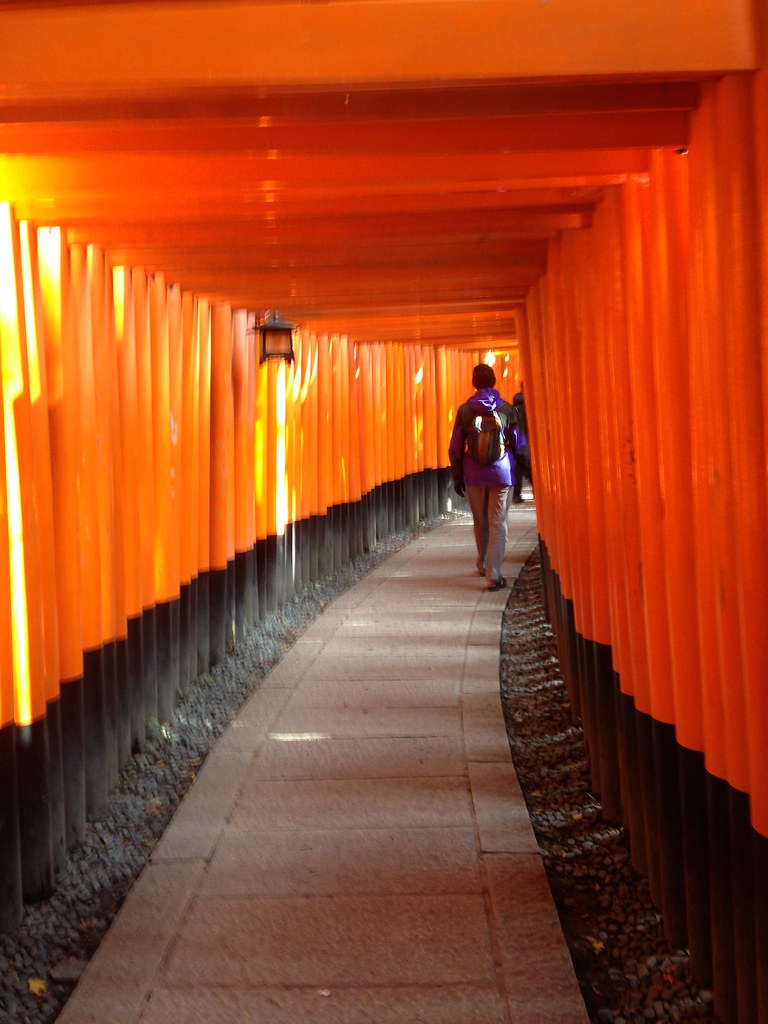
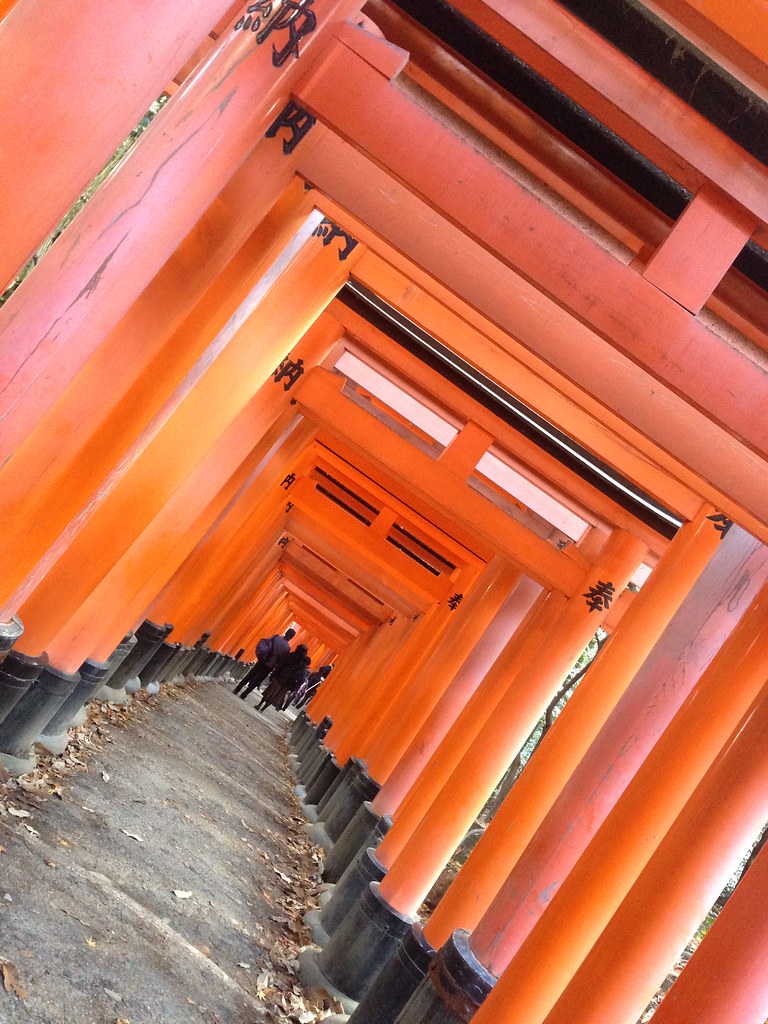
We tried raw horse meat and fatty mane sushi…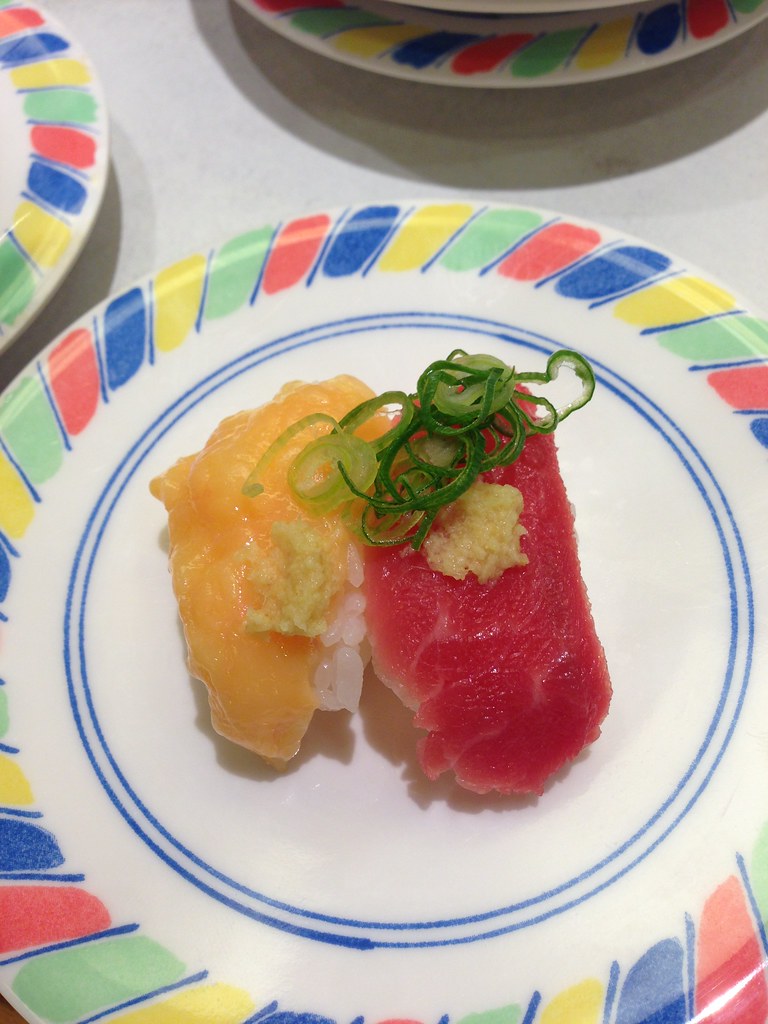 And the infamous (sometimes lethally poisonous!) fugu (pufferfish) sushi – all three of which were surprisingly tasty, if not strange.
And the infamous (sometimes lethally poisonous!) fugu (pufferfish) sushi – all three of which were surprisingly tasty, if not strange.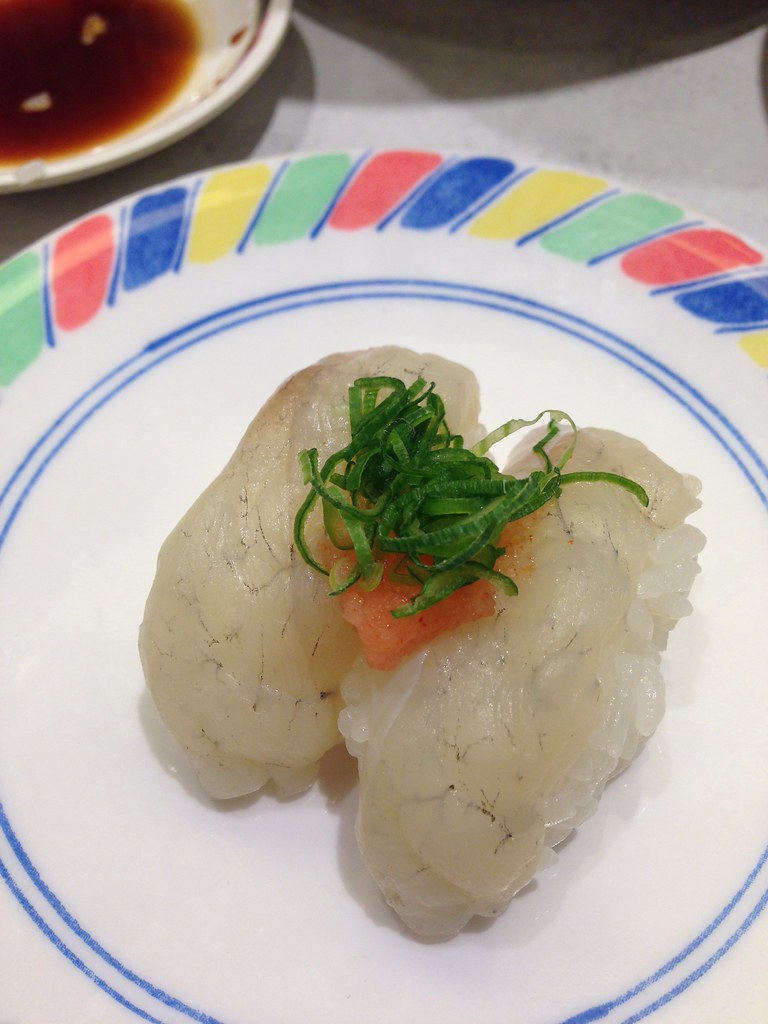 Late that night, we took a night bus (10:40 pm) from Kyoto to Hiroshima, where we quickly boarded a cable car (at 6 am) to the Hiroshima port, and then from there a ferry to Etajima island and from THERE a bus across the island, where we then TREKKED up this ridiculous hill with our packs to get to our home for the next 4 days. Turns out, the travel was worth it.
Late that night, we took a night bus (10:40 pm) from Kyoto to Hiroshima, where we quickly boarded a cable car (at 6 am) to the Hiroshima port, and then from there a ferry to Etajima island and from THERE a bus across the island, where we then TREKKED up this ridiculous hill with our packs to get to our home for the next 4 days. Turns out, the travel was worth it.
Etajima turned out to be the perfect mix of a Marquette, Michigan + Portland, Oregon. It felt industrial, and close-knit, cozy and cold. The people were warm and remarkably curious about us (we saw absolutely no foreigners anywhere). We loved it. One night, Kev and I made our way an onsen (another public bath house) on the other side of the island. I wasn’t there for more than 2 minutes, when I was bombarded by about 12 old Japanese ladies trying to speak with me (again, while stark naked) SOLELY in Japanese. Lots of cave-lady sign language and laughter allowed us to communicate (albeit in a comically basic way :)), but it was experiences like this that made our time so wonderful.
 We stayed in a 100+ year old traditional Japanese-style house which was built by the owner’s great-grandfather. Interestingly, he actually saw the “mushroom cloud” from the nuclear bomb across the sea in Hiroshima from this home. It was a balmy 39 degrees while we were on the island, and in an attempt to stay warm, we went through copious hand warmers (of which we had 2-3 stuck to various parts of our bodies or tucked in our socks at any given point throughout the day), drank enough coffee to shake for a 24-hour stretch and (if we weren’t walking around) sat literally inches in front of our kerosene+fan room heater swapping sides every few minutes to prevent one side of ourselves from catching fire while the other side froze like an ice cube. You wouldn’t believe it by my description, but it was glorious.
We stayed in a 100+ year old traditional Japanese-style house which was built by the owner’s great-grandfather. Interestingly, he actually saw the “mushroom cloud” from the nuclear bomb across the sea in Hiroshima from this home. It was a balmy 39 degrees while we were on the island, and in an attempt to stay warm, we went through copious hand warmers (of which we had 2-3 stuck to various parts of our bodies or tucked in our socks at any given point throughout the day), drank enough coffee to shake for a 24-hour stretch and (if we weren’t walking around) sat literally inches in front of our kerosene+fan room heater swapping sides every few minutes to prevent one side of ourselves from catching fire while the other side froze like an ice cube. You wouldn’t believe it by my description, but it was glorious.
No shoes allowed in the house (worth noting, Kev was in good company with our host’s love of crocs :))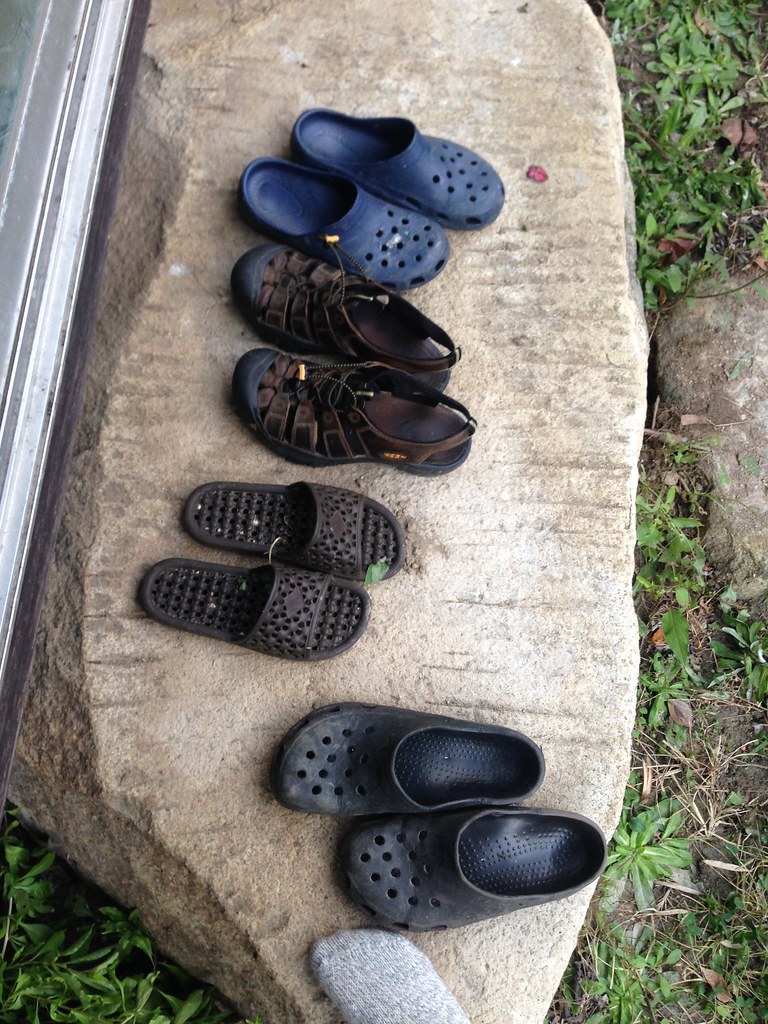 Our backyard.
Our backyard.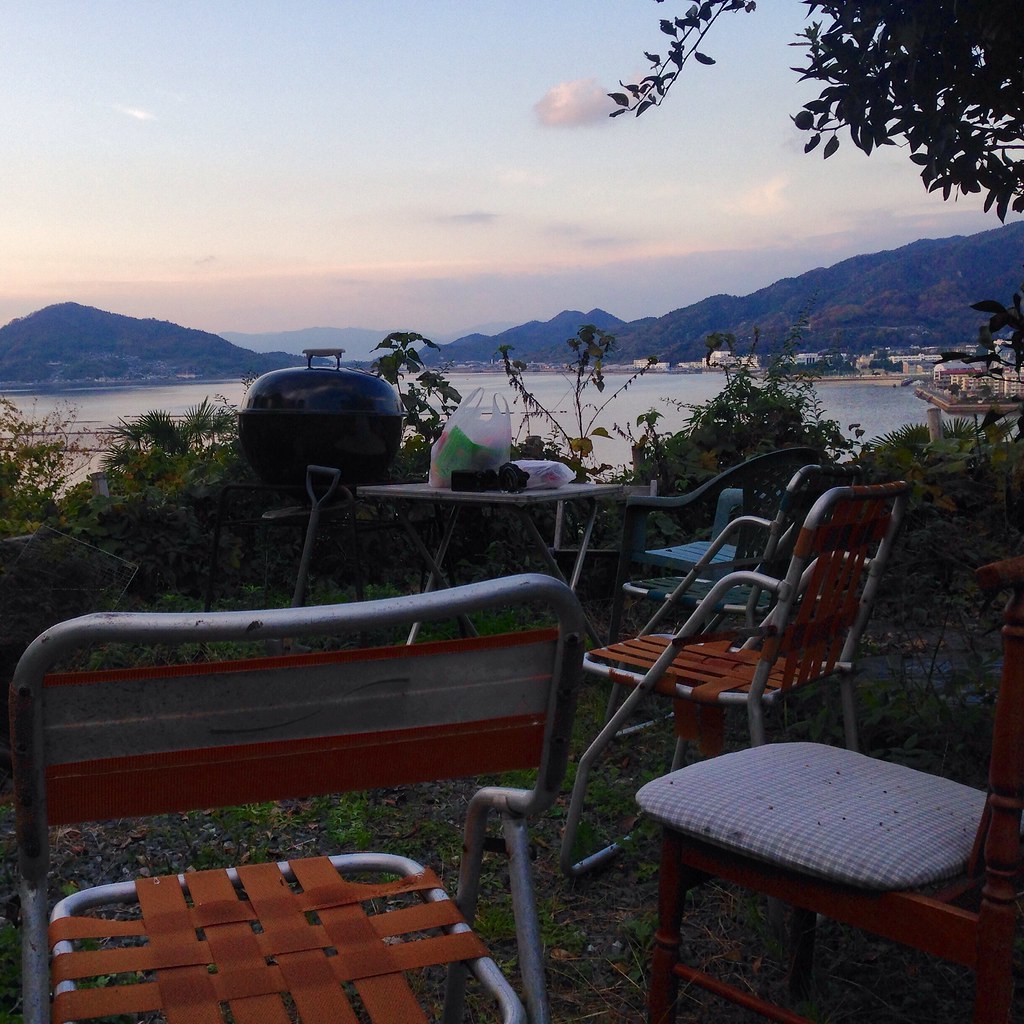 Also worth noting that we truly had the best host ever. Yohei taught us about how to make delicious somen noodles, made us fancy bancha-bark tea, (after learning about our love for ramen) cooked us ramen eggs and homemade toast and overall was just full of great conversation and warmth. While we didn’t think our stay could have gotten much better in Etajima, Yohei was truly the icing on the cake.
Also worth noting that we truly had the best host ever. Yohei taught us about how to make delicious somen noodles, made us fancy bancha-bark tea, (after learning about our love for ramen) cooked us ramen eggs and homemade toast and overall was just full of great conversation and warmth. While we didn’t think our stay could have gotten much better in Etajima, Yohei was truly the icing on the cake.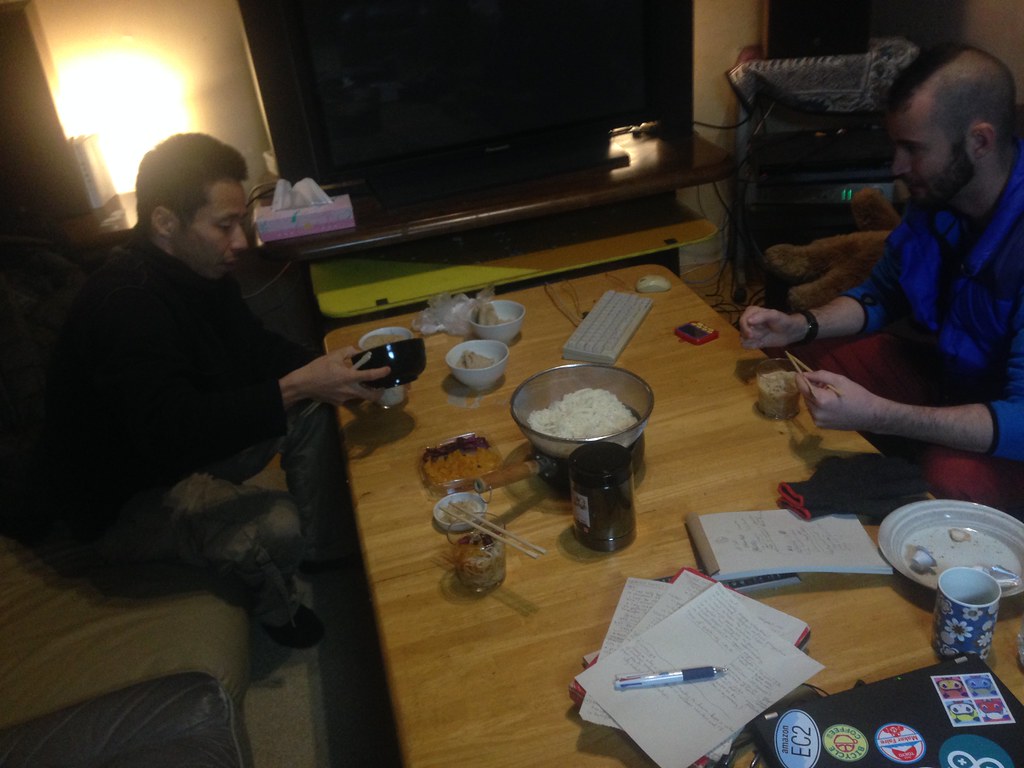
Another beautiful feature of the island, was that it was full of mandarin and orange groves.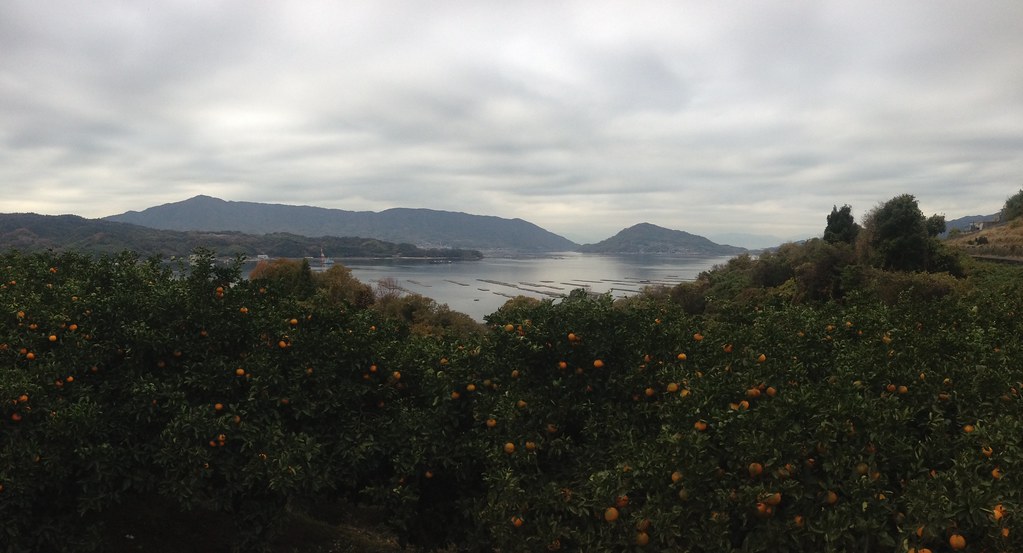 There were these old-school rickity orange-moving carts scattered up and down the hills, which only added to the nostalgic feel.
There were these old-school rickity orange-moving carts scattered up and down the hills, which only added to the nostalgic feel.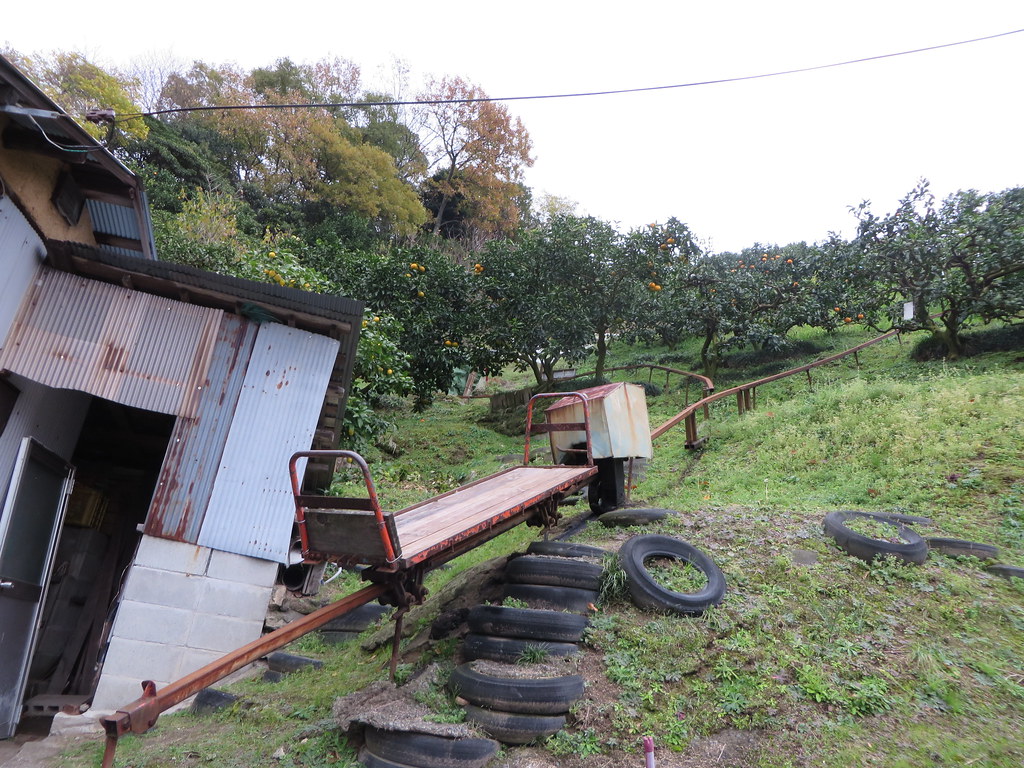
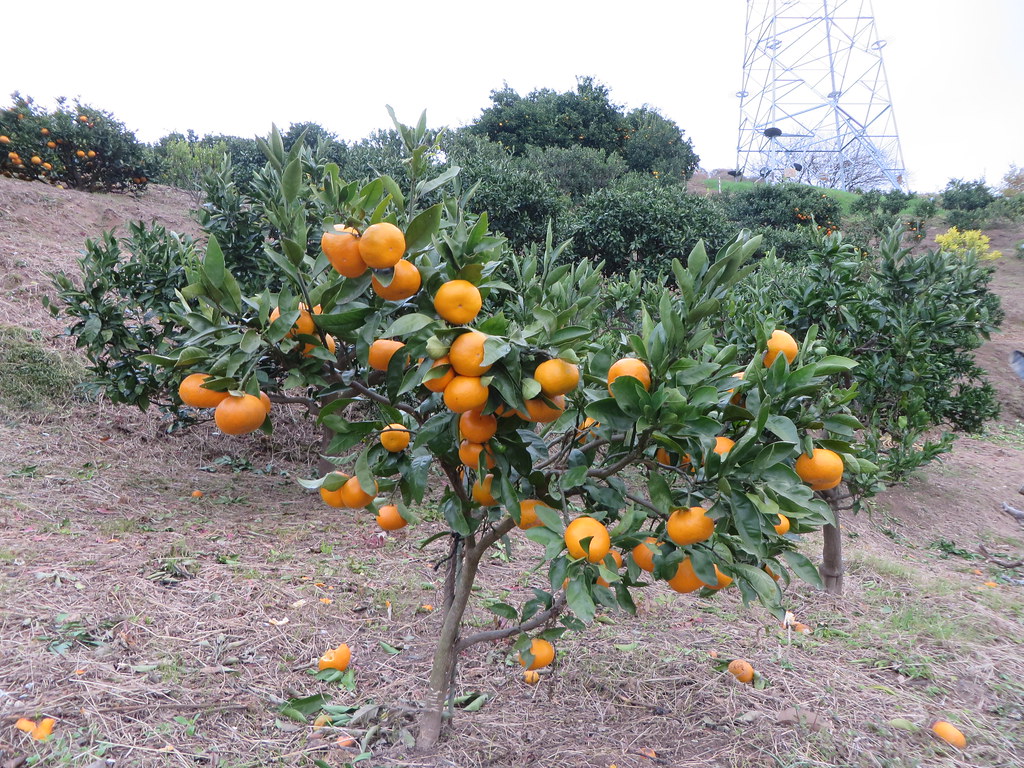 We collected awesome shells on the beach.
We collected awesome shells on the beach.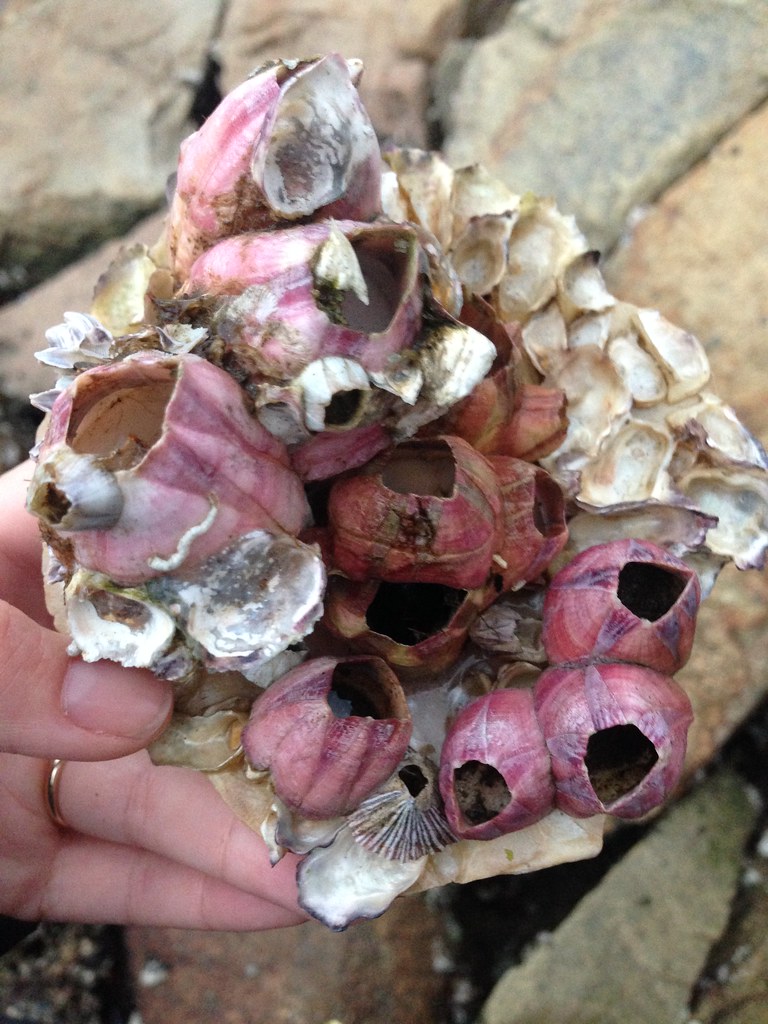

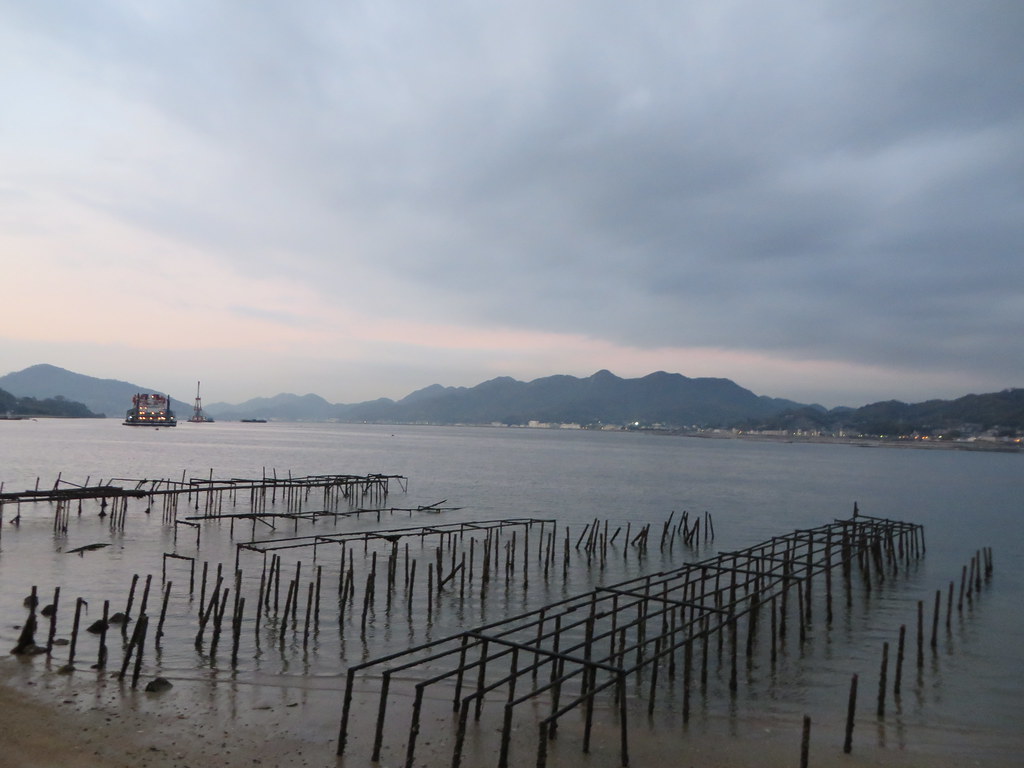 Walked through scallop farms.
Walked through scallop farms.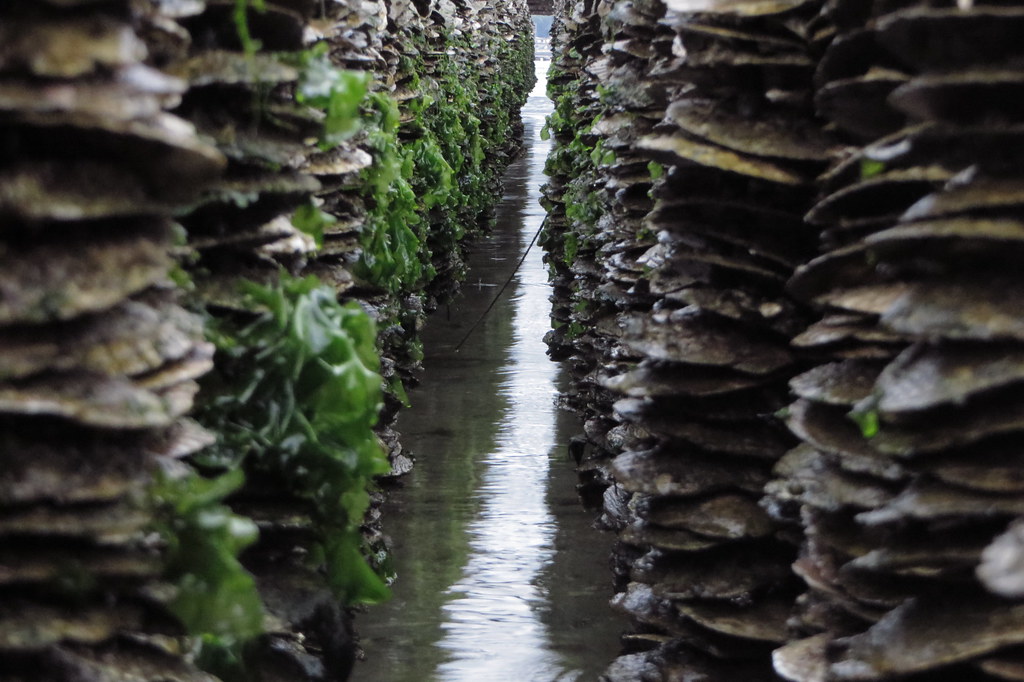
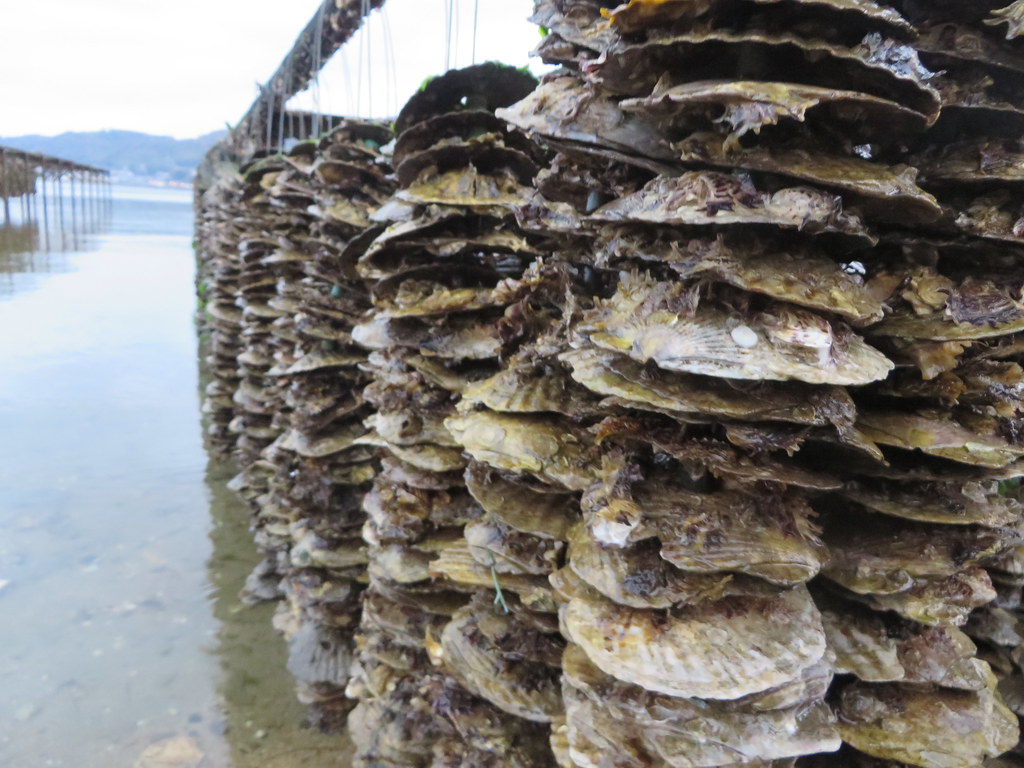
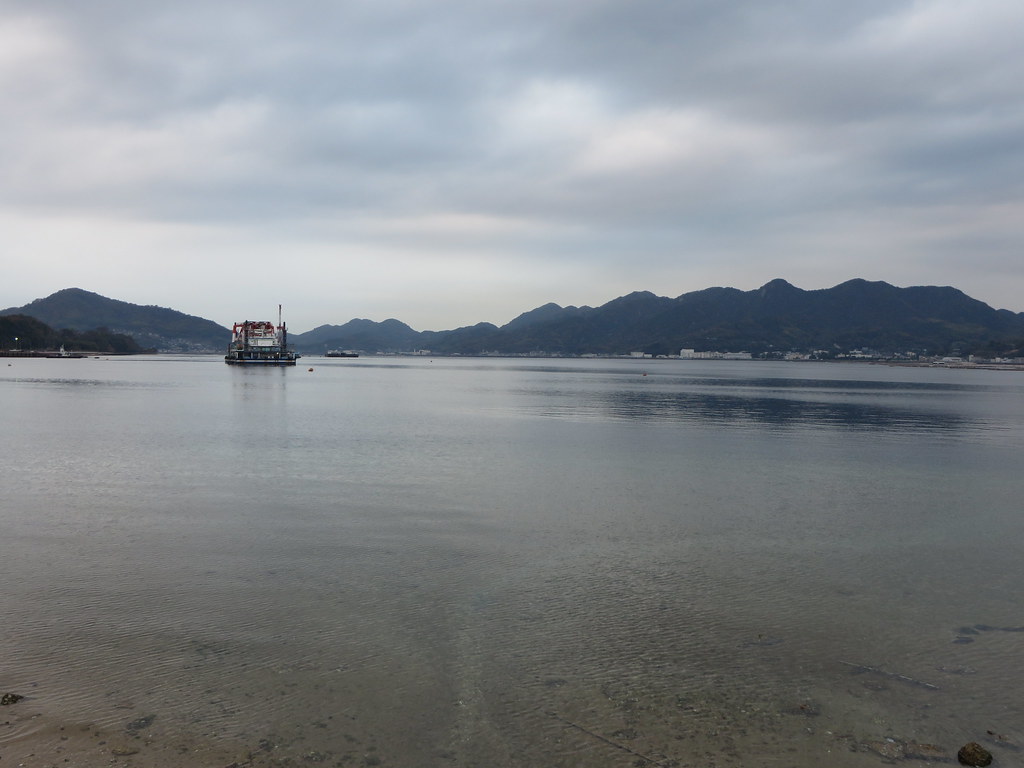
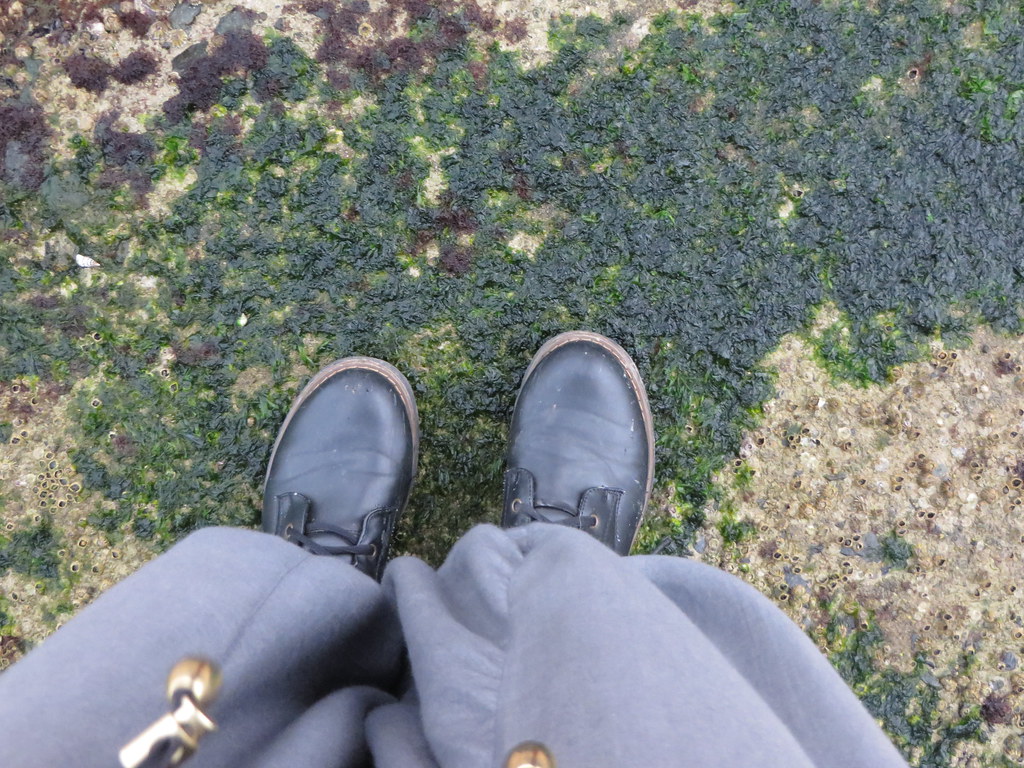
 Geocached through beautiful patches of cabbage and various veges in practically every yard.
Geocached through beautiful patches of cabbage and various veges in practically every yard.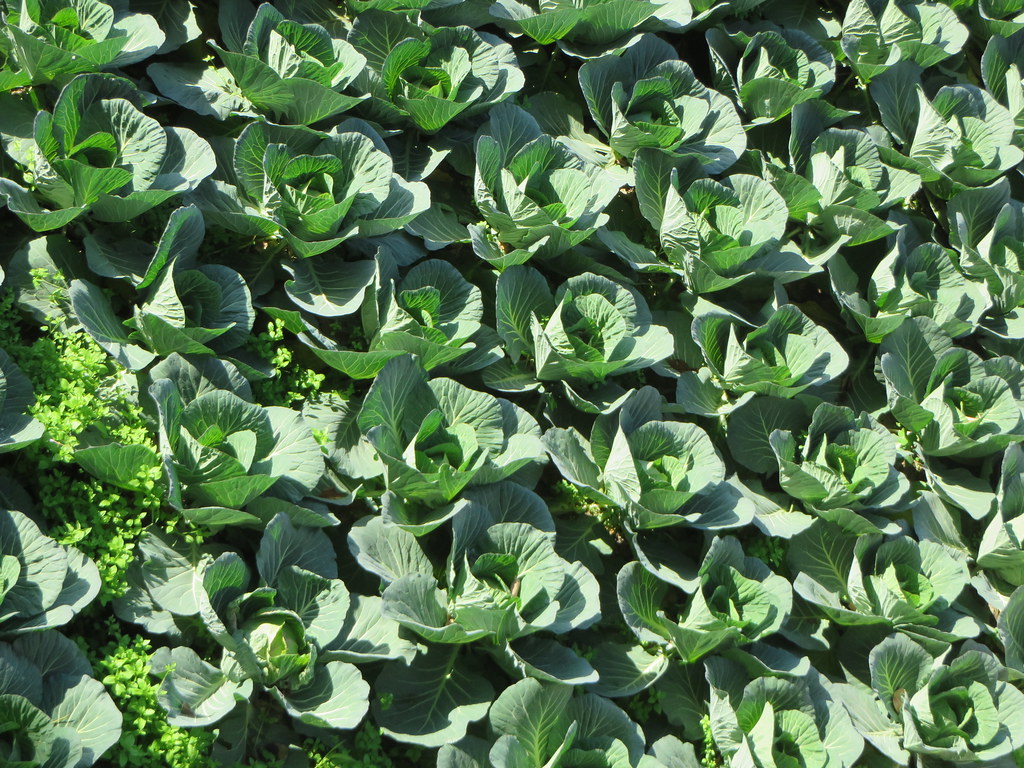 We tried lots of new snacks.
We tried lots of new snacks.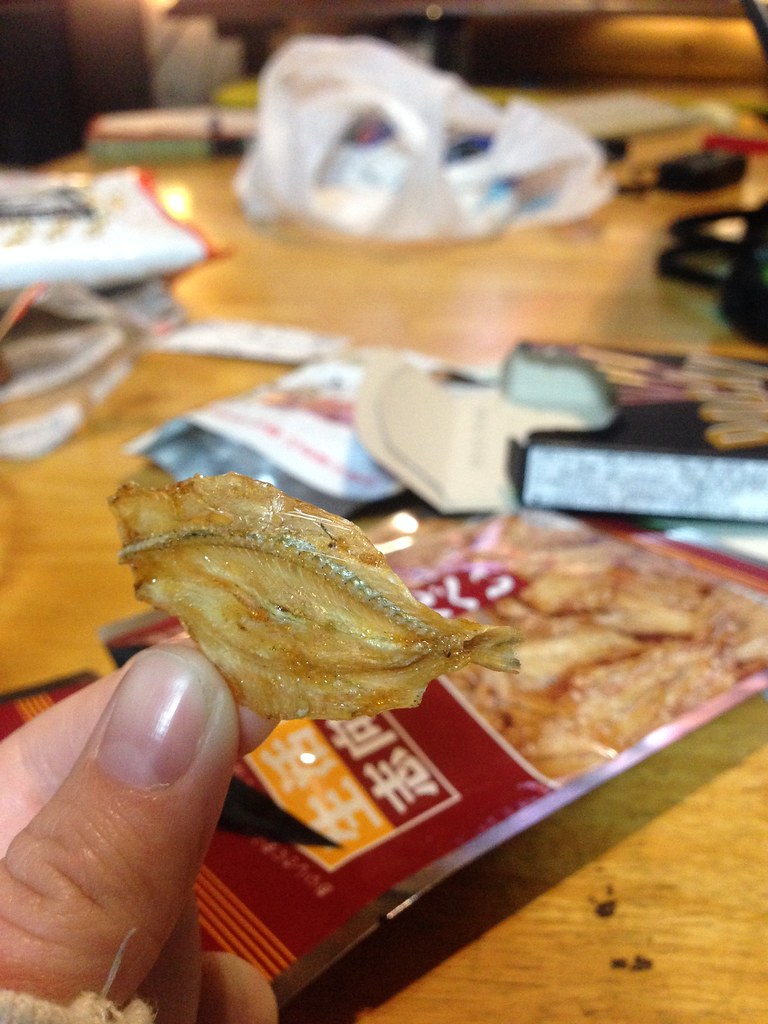 Last night with Yohei.
Last night with Yohei.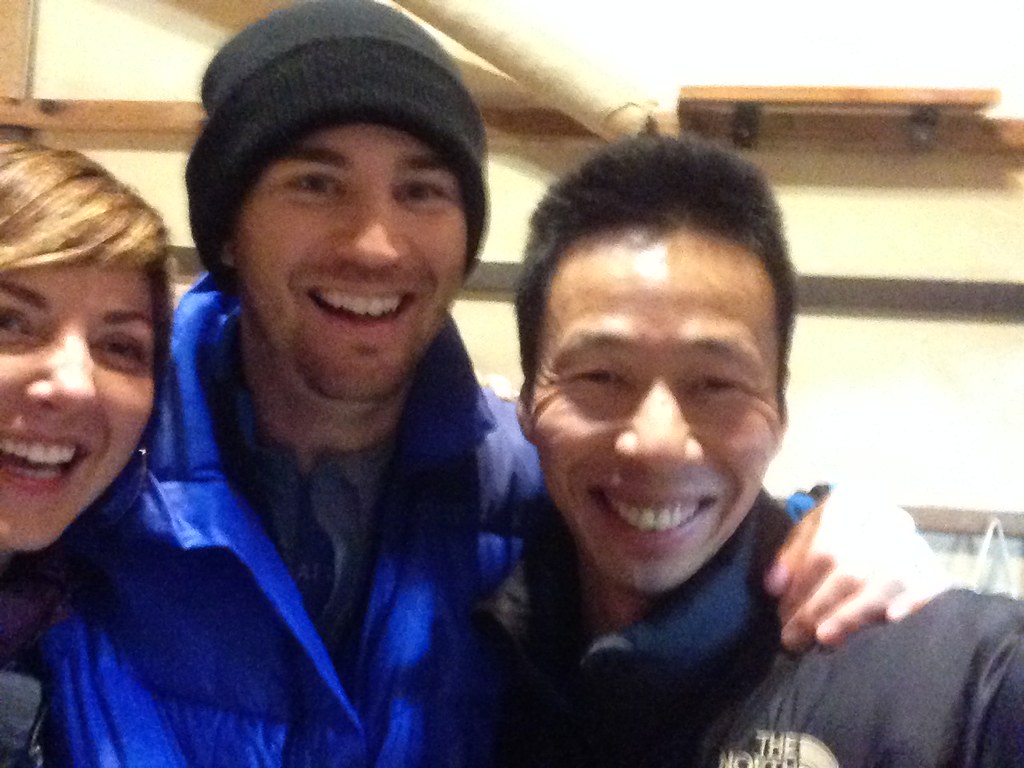 On our way to catch a bus to get to the ferry on our way back to Hiroshima, we happened across these two ladies cooking up Okonomiyaki, these strange cabbage + pancake + noodles + BBQ sauce things and decided to give them a shot. They were delicious and again, the women were unbelievably warm.
On our way to catch a bus to get to the ferry on our way back to Hiroshima, we happened across these two ladies cooking up Okonomiyaki, these strange cabbage + pancake + noodles + BBQ sauce things and decided to give them a shot. They were delicious and again, the women were unbelievably warm.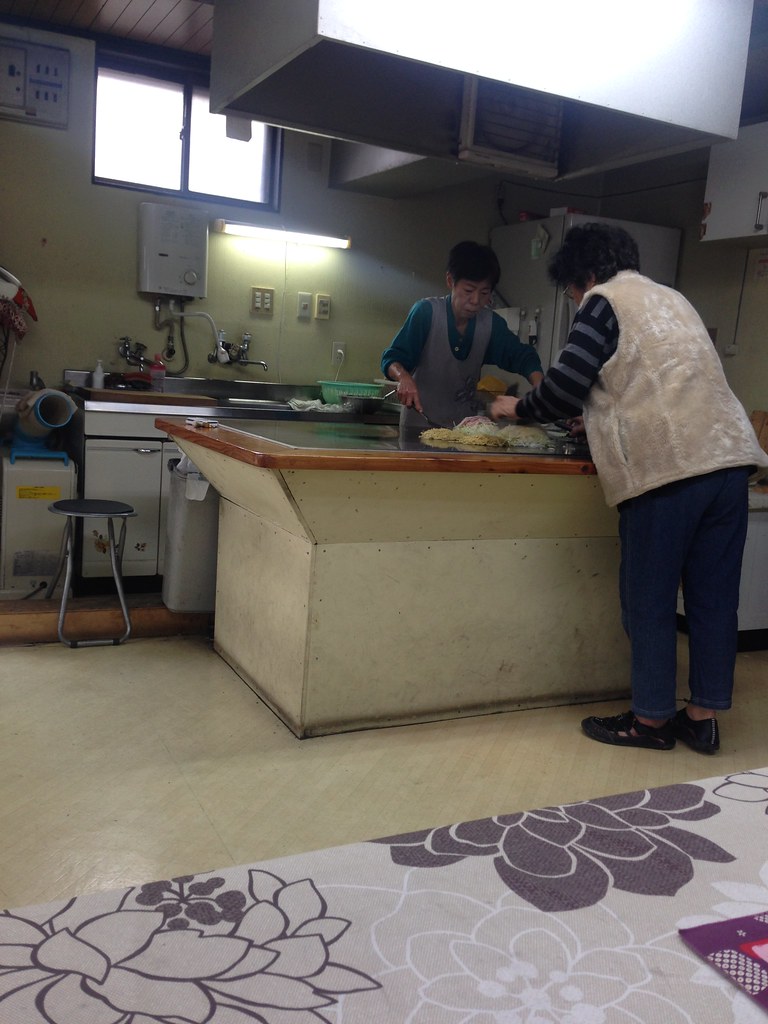
 On our ferry back to the mainland with stormy skies.
On our ferry back to the mainland with stormy skies.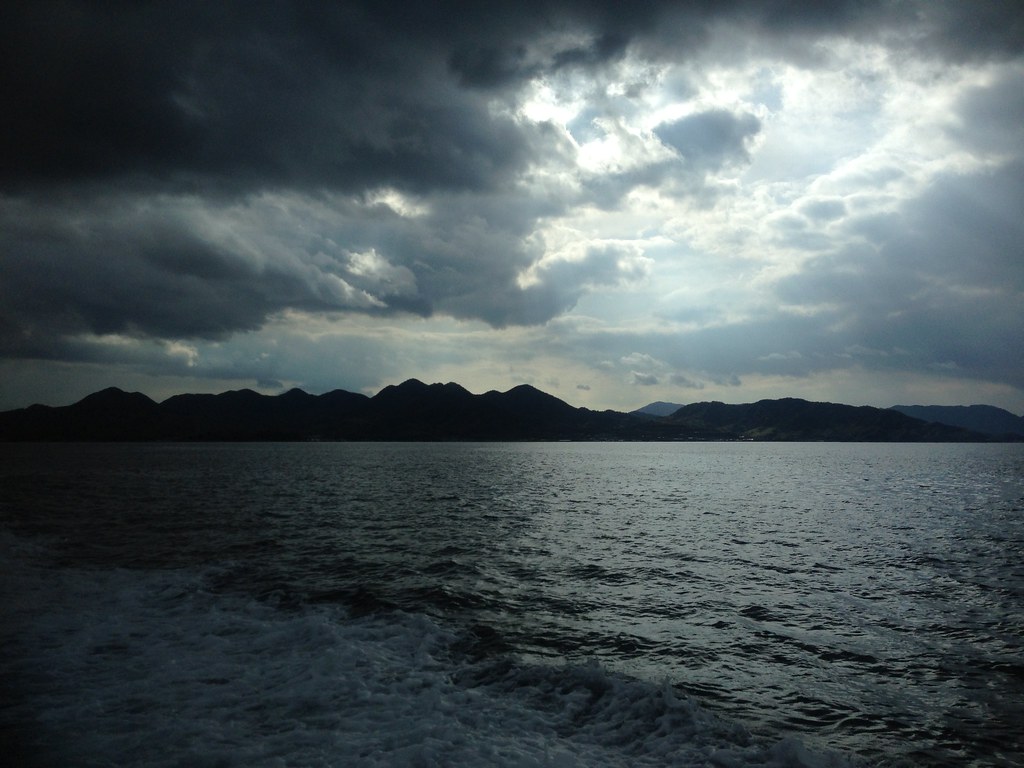
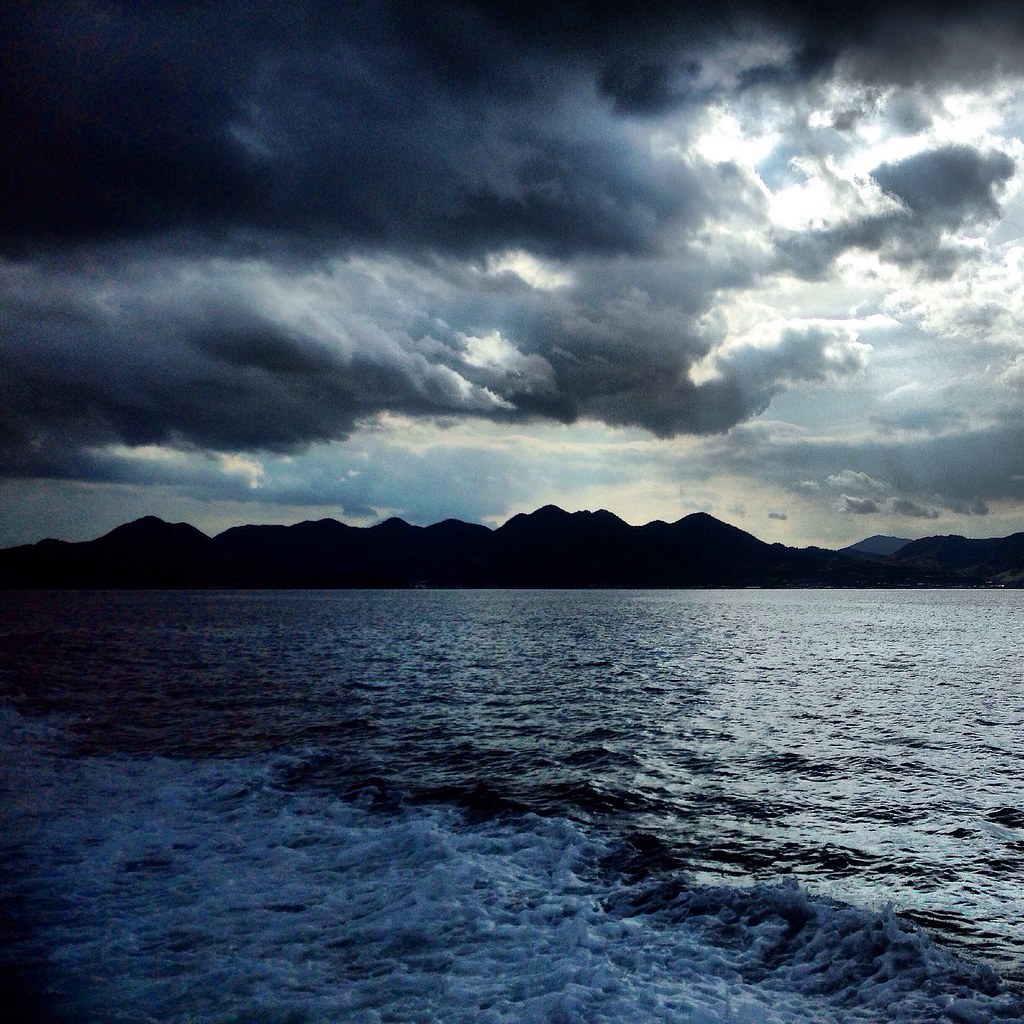 Back in Hiroshima, we went to the museum. It was something Kev and I both felt really strongly that we wanted to experience, and truly (not that we expected much different), it was just unbelievably depressing. The entire museum was filled with stories of specific people (many of those showcased, children) who were victims of the nuclear bomb. There were melted skin fragments housed in jars, nails and hair and burnt clothing galore. Photographs of charred skin and gaping wounds rinsed with “black rain”. First-hand video accounts of victims remembering what that day was like for them, and all that they lost. Almost 140,000 people died that day. 140,000…
Back in Hiroshima, we went to the museum. It was something Kev and I both felt really strongly that we wanted to experience, and truly (not that we expected much different), it was just unbelievably depressing. The entire museum was filled with stories of specific people (many of those showcased, children) who were victims of the nuclear bomb. There were melted skin fragments housed in jars, nails and hair and burnt clothing galore. Photographs of charred skin and gaping wounds rinsed with “black rain”. First-hand video accounts of victims remembering what that day was like for them, and all that they lost. Almost 140,000 people died that day. 140,000… This is the concrete slab that so many of us have seen pictures of in our history books of a person’s shadow “burned” on to the stone.
This is the concrete slab that so many of us have seen pictures of in our history books of a person’s shadow “burned” on to the stone.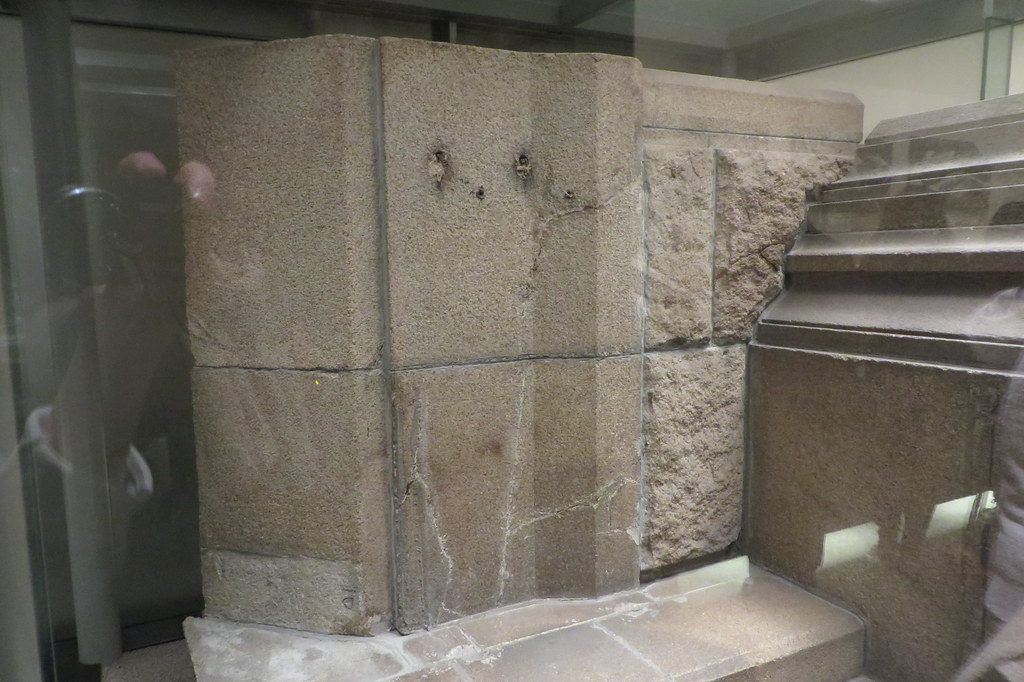 A traumatizing diorama of children with melted skin.
A traumatizing diorama of children with melted skin.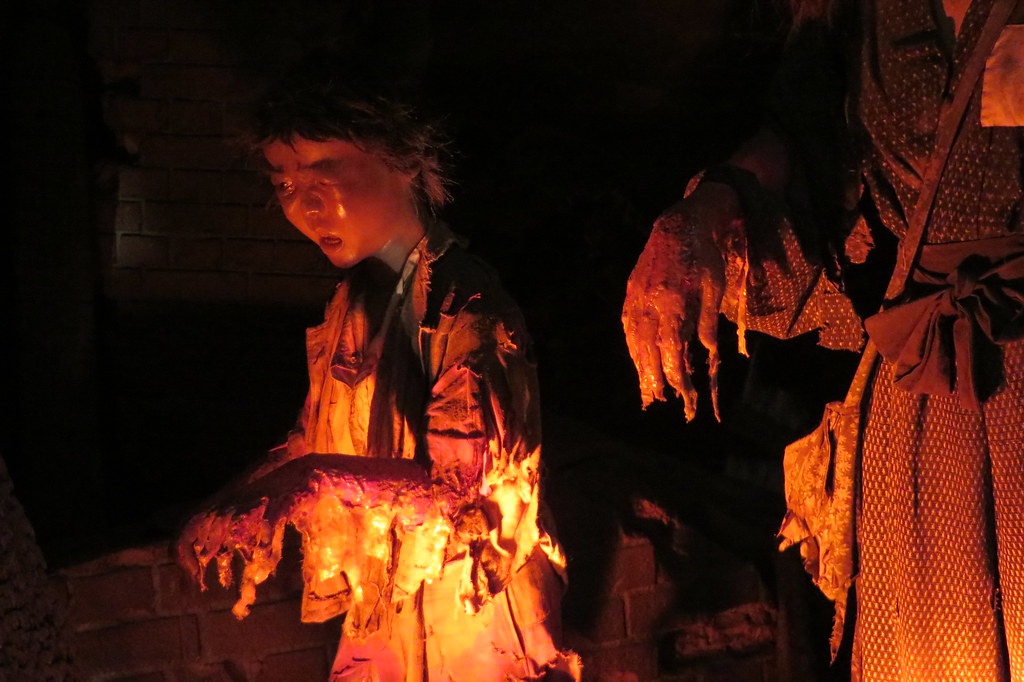 Hiroshima’s Peace Dome still standing from the bombings.
Hiroshima’s Peace Dome still standing from the bombings.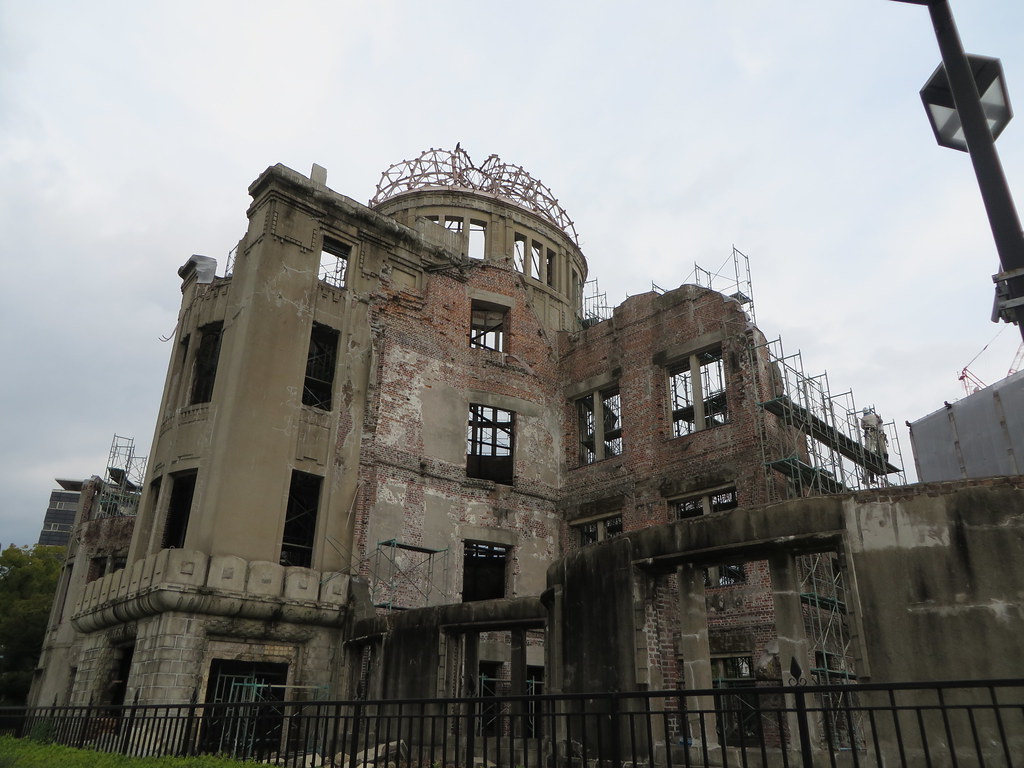 I still have yet to process what it truly meant to me to be an American walking around the streets of Hiroshima and encountering so many people (on both Etajima and in Hiroshima) that must have been directly affected by the bomb. While everyone we met asked us if we were Americans, we were treated with nothing but kindness. Time and time again I am reminded that there are always two sides to every story – what we learn in history about our reasons for the bomb dropping and learning a bit about the story that Japanese tell their children about why we dropped the bomb in the museum, being a perfect example of this. I’ll never know what is the lesser of two evils, or what makes a time”right” to go to war – and am thankful that I am not in a position where I will ever need to decide, and that I have lived my entire life with my family and those that I love safe from the threat of it. Regardless of the story told though, it is abundantly clear to me what an appalling thing war is, and regardless of how it begins that it is most frequently the innocent that lose the most.
I still have yet to process what it truly meant to me to be an American walking around the streets of Hiroshima and encountering so many people (on both Etajima and in Hiroshima) that must have been directly affected by the bomb. While everyone we met asked us if we were Americans, we were treated with nothing but kindness. Time and time again I am reminded that there are always two sides to every story – what we learn in history about our reasons for the bomb dropping and learning a bit about the story that Japanese tell their children about why we dropped the bomb in the museum, being a perfect example of this. I’ll never know what is the lesser of two evils, or what makes a time”right” to go to war – and am thankful that I am not in a position where I will ever need to decide, and that I have lived my entire life with my family and those that I love safe from the threat of it. Regardless of the story told though, it is abundantly clear to me what an appalling thing war is, and regardless of how it begins that it is most frequently the innocent that lose the most.
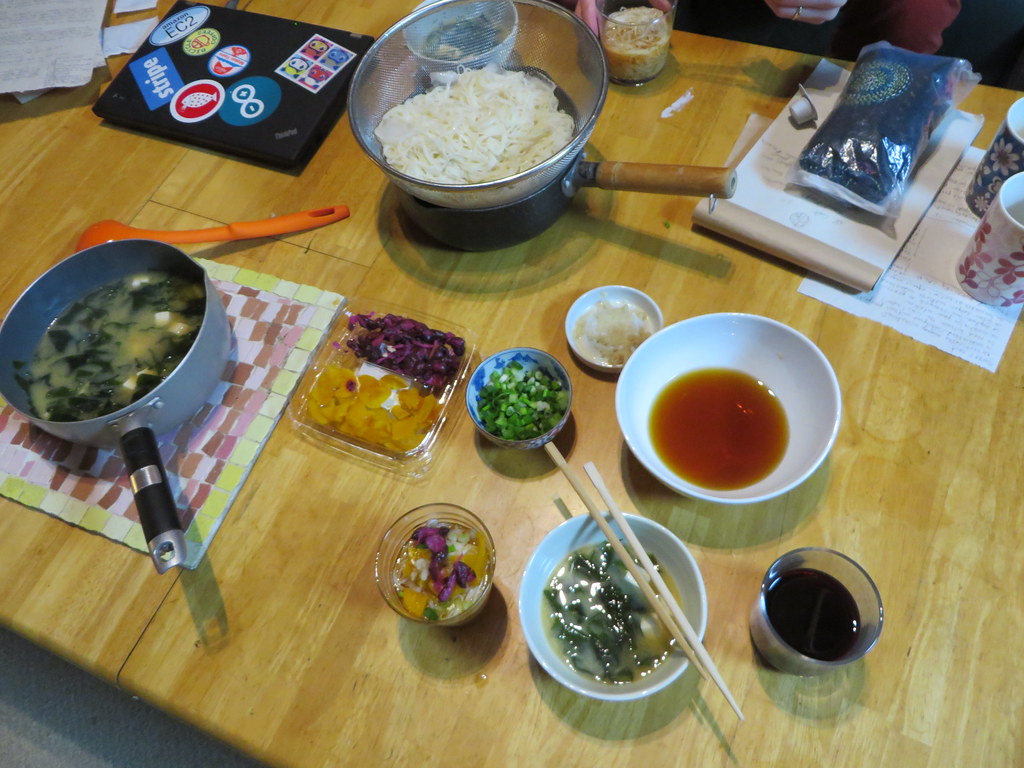
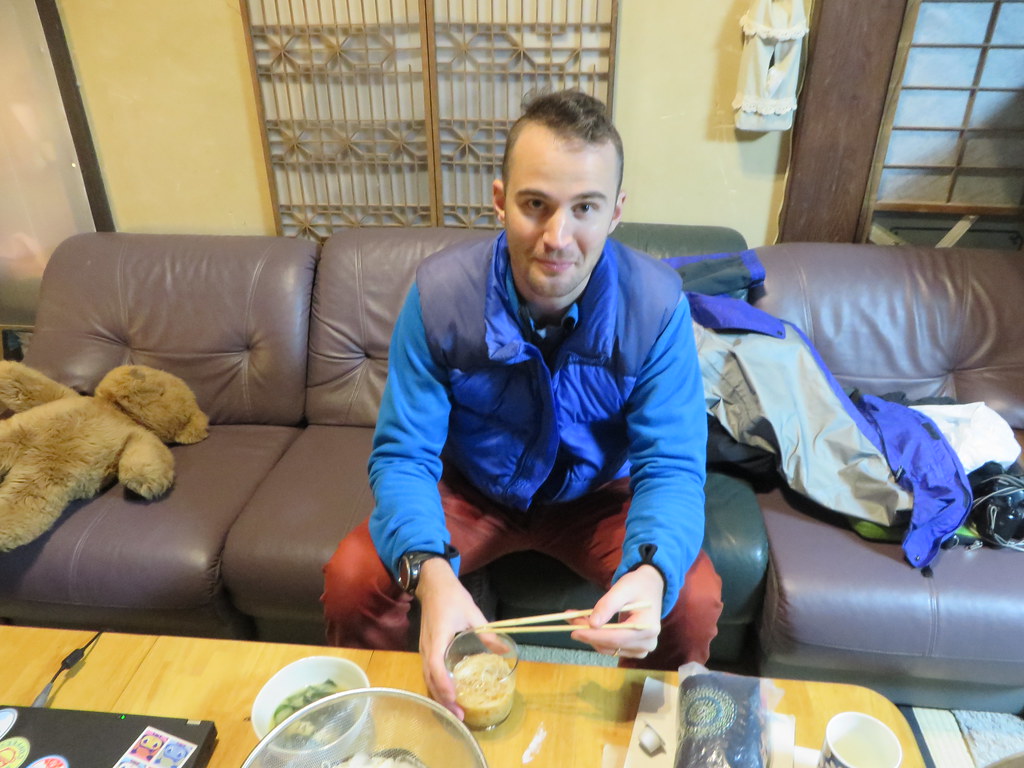
Leave a Reply
You must be logged in to post a comment.